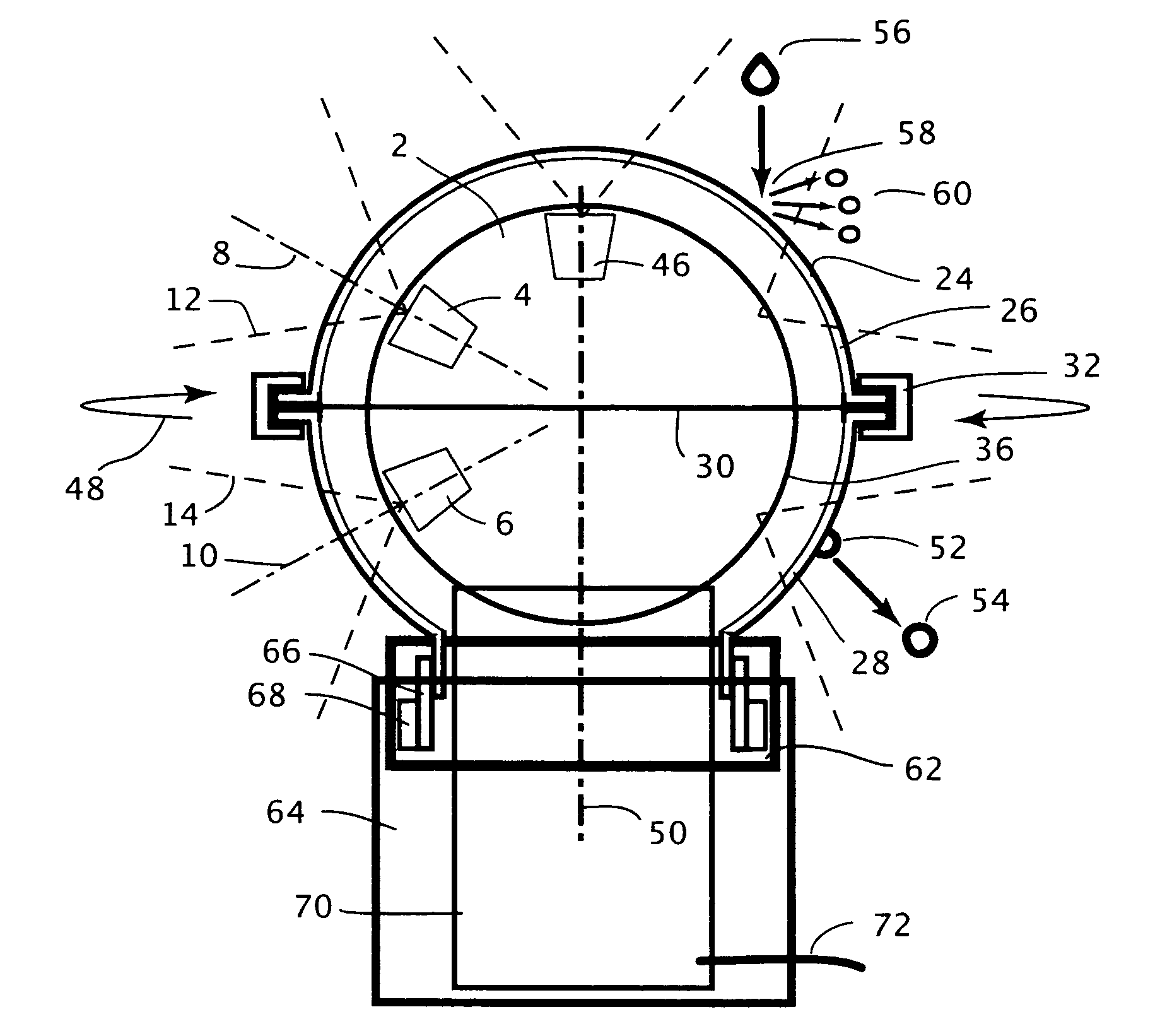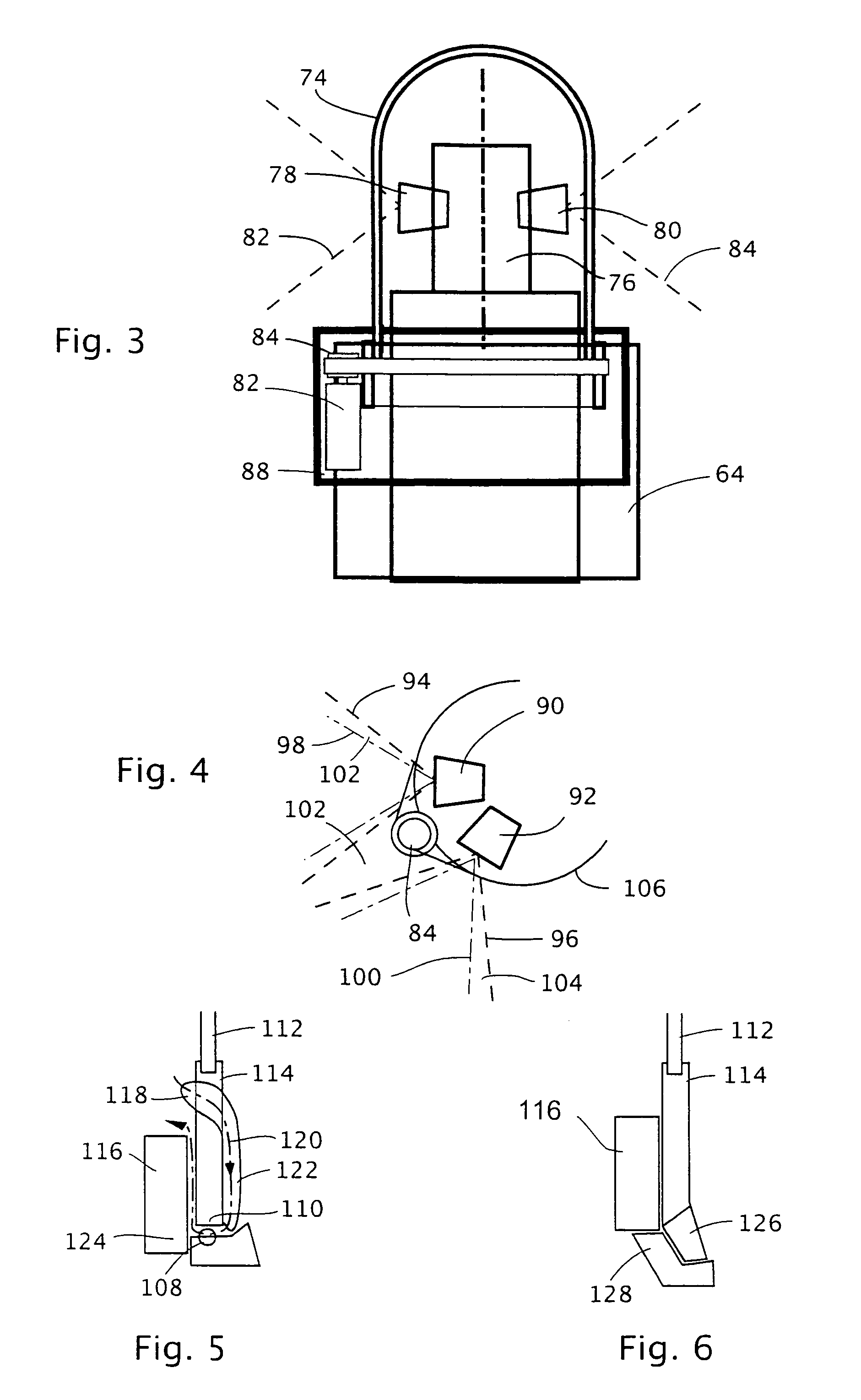Spinning camera enclosure for environmental protection
a camera enclosure and environmental protection technology, applied in the field of environmental protection enclosures, can solve the problems of filter cover not preventing water drops from appearing in the lens image, affecting the performance of the lens outdoors, and affecting the image quality of the lens
- Summary
- Abstract
- Description
- Claims
- Application Information
AI Technical Summary
Benefits of technology
Problems solved by technology
Method used
Image
Examples
Embodiment Construction
[0016]In the discussion that follows, terms such as “water,”“lens” and “camera” are used to describe the function and operation of the present invention and an exemplary type of sensor that could make use of the invention. No particular limitation should be inferred from these terms; they are used as general descriptors for environmental protection.
[0017]The present invention features a rapidly-spinning clear volumetric enclosure or “shell” for a camera system or other type of sensor. The lens or lenses of this camera system look out from within the shell, and the shell and the motor that spins it are designed to be essentially invisible to the camera system. As the shell spins, a constant distance is maintained between the shell and the camera lens or lenses, and any water drops or dust particles that contact the shell surface are quickly thrown off it by a combination of the fast relative motion of the shell, the local air currents at the surface of the shell, and centrifugal forc...
PUM
 Login to View More
Login to View More Abstract
Description
Claims
Application Information
 Login to View More
Login to View More - R&D
- Intellectual Property
- Life Sciences
- Materials
- Tech Scout
- Unparalleled Data Quality
- Higher Quality Content
- 60% Fewer Hallucinations
Browse by: Latest US Patents, China's latest patents, Technical Efficacy Thesaurus, Application Domain, Technology Topic, Popular Technical Reports.
© 2025 PatSnap. All rights reserved.Legal|Privacy policy|Modern Slavery Act Transparency Statement|Sitemap|About US| Contact US: help@patsnap.com



